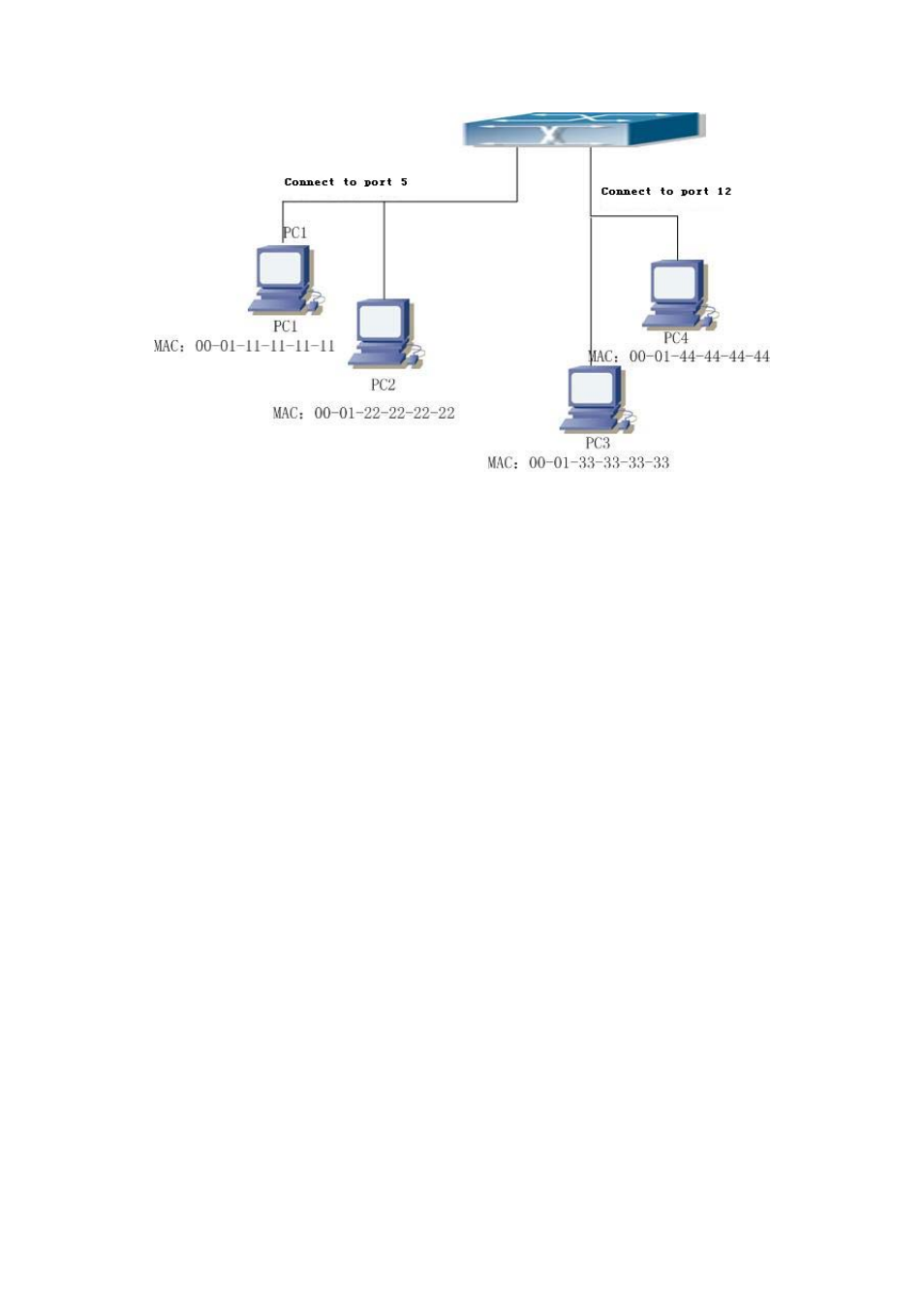PLANET WGSW-52040 User Manual
Page 185

Figure 21-1: MAC Table dynamic learning
The topology of the figure above: 4 PCs connected to switch, where PC1 and PC2 belongs to
a same physical segment (same collision domain), the physical segment connects to port 1/5
of switch; PC3 and PC4 belongs to the same physical segment that connects to port 1/12 of
switch.
The initial MAC table contains no address mapping entries. Take the communication of PC1
and PC3 as an example, the MAC address learning process is as follow:
1. When PC1 sends message to PC3, the switch receives the source MAC address
00-01-11-11-11-11 from this message, the mapping entry of 00-01-11-11-11-11 and port
1/5 is added to the switch MAC table.
2. At the same time, the switch learns the message is destined to 00-01-33-33-33-33, as the
MAC table contains only a mapping entry of MAC address 00-01-11-11-11-11 and port1/5,
and no port mapping for 00-01-33-33-33-33 present, the switch broadcast this message to
all the ports in the switch (assuming all ports belong to the default VLAN1).
3. PC3 and PC4 on port 1/12 receive the message sent by PC1, but PC4 will not reply, as the
destination MAC address is 00-01-33-33-33-33, only PC3 will reply to PC1. When port
1/12 receives the message sent by PC3, a mapping entry for MAC address
00-01-33-33-33-33 and port 1/12 is added to the MAC table.
4. Now the MAC table has two dynamic entries, MAC address 00-01-11-11-11-11 - port 1/5
and 00-01-33-33-33-33 -port1/12.
5. After the communication between PC1 and PC3, the switch does not receive any message
sent from PC1 and PC3. And the MAC address mapping entries in the MAC table are
deleted in 300 to 2*300 seconds (ie, in single to double aging time). The 300 seconds here
21-107